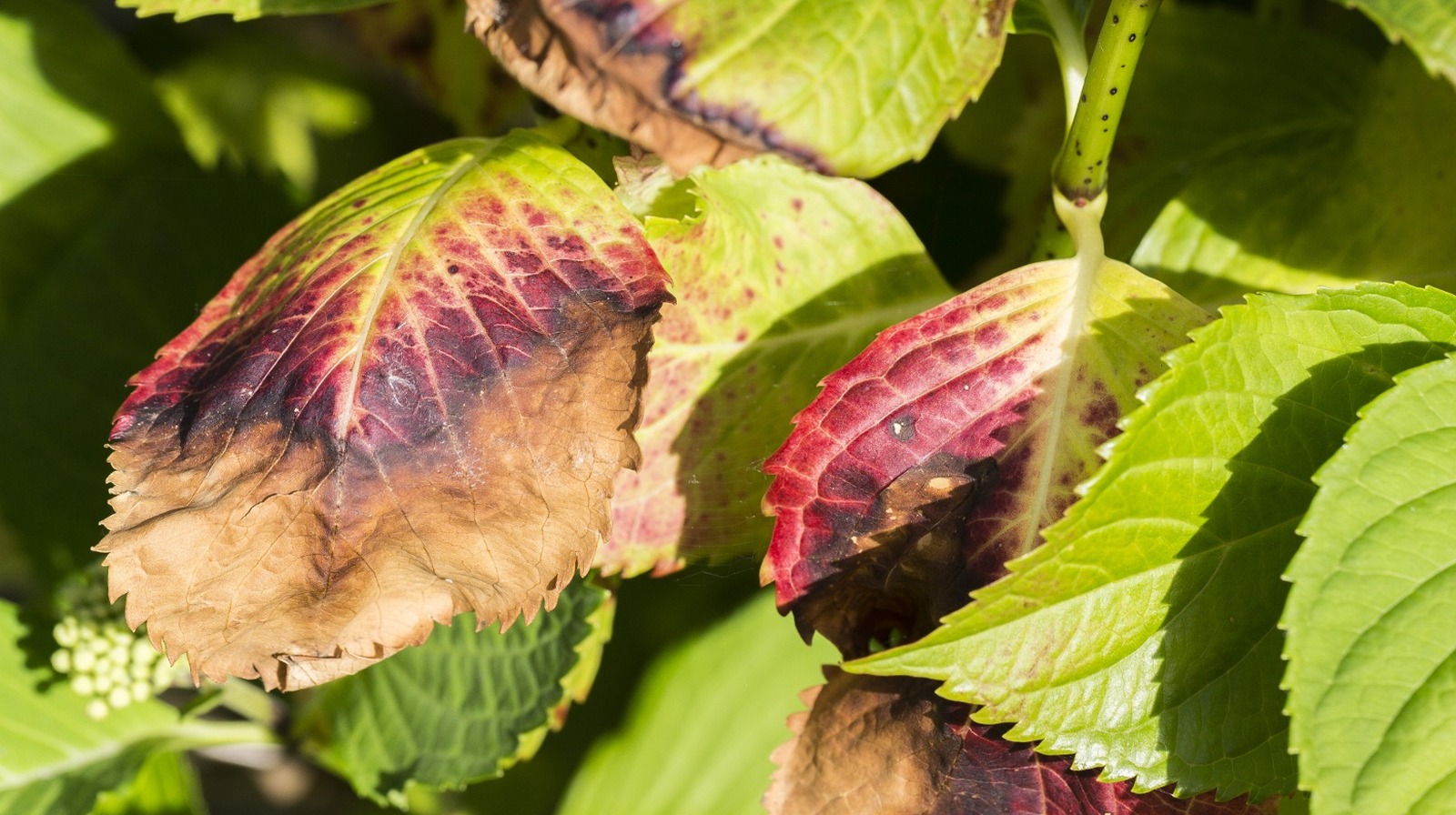What Does Hydrangea Leaves Turning Yellow Mean?
The Single Strategy To Use For Hydrangea Leaves Turning Yellow
Table of Contents6 Simple Techniques For Hydrangea Leaves Turning YellowHydrangea Leaves Turning Yellow for BeginnersHow Hydrangea Leaves Turning Yellow can Save You Time, Stress, and Money.Hydrangea Leaves Turning Yellow Can Be Fun For EveryoneA Biased View of Hydrangea Leaves Turning Yellow
Huge fallen leaves typically look sagging during the afternoon warm. When they fall short to perk up in the evening or still look wilted in the early morning, your plant can be overwatered.Remove the plant from the soil and trim out any kind of origins that aren't white and turgid (plump). Replant in a new place or work some sand into the soil for better drain. Underwatering likewise creates leaves to transform yellow with brown, crispy edges. Don't try to fix the trouble by sprinkling exceedingly.
Photosynthesis, as most of us recognize, is important for plant survival, so chlorosis requirements to be treated swiftly. While chlorosis can be created by various other nutrient shortages, it is most generally an iron shortage. In the adhering to area you will certainly find out just how to acknowledge whether your plant has an iron shortage or another thing.
First shows up on the older fallen leaves, but the leaf blood vessels stay eco-friendly. While there is typically enough iron in all-natural dirt, hydrangeas typically struggle to soak up sufficient of it.
Hydrangea Leaves Turning Yellow for Beginners
The most effective way to protect against iron deficiency-chlorosis in hydrangeas is to plant them in suitable ericaceous or acidic dirt. When planting in a bed, mix in some peat or reduced-peat ericaceous garden compost and check the p, H worth yearly. This is necessary due to the fact that the garden compost blend around the plants will influence the p, H value of the dirt over time and the p, H value might climb once more.
It is only made use of on a business range, where a prolonged iron shortage would certainly indicate substantial return losses. The unique fertilisers for this are commonly pricey and require to be used in very exact doses to avoid damage to the leaves. Foliar fertilisation is only effective for a short period and should be used frequently or supplemented by regular iron fertilisation.
September is the best time of year to do something regarding those hydrangeas. Their fallen leaves are transforming yellow, the flowers have discolored, and their gangly look is making you insane.
Now to deal with the continuing to be hedge, not a pretty sight as wintertime approaches. Mophead, Lacecap and Oakleaf hydrangeas bloom on old wood. What that indicates is they will grow following year on wood that was developed this year. Do not trim Mophead, Lacecaps and Oakleaf hydrangeas to the ground, as you will certainly remove the stems that are ready to bloom next spring.
The smart Trick of Hydrangea Leaves Turning Yellow That Nobody is Discussing
That method you won't be removing a lot of of next year's flower buds. Trim out as much dead timber as you can locate. You can reduce nonessential down to the ground. If the bush is getting bigger than you like, you can get a third of the real-time wood while you remain in there.
We're best in the middle of our late-blooming hydrangea period below, so I assumed I would certainly share a tip for this particular sort of hydrangea that I located really intriguing. A lot of individuals have a similar problem with their panicle hydrangeas where they start to see the leaves turning yellow and leaving at different components discover this info here of the period and it can be rather dramatic and rather worrying because it can take place actually rapidly on a hedge that feels like it's otherwise actually healthy.

Where we stay in zone 6, they're fairly very easy to have success with and they're actually prominent in our area, which is fantastic because that indicates that there are hydrangeas practically all over currently of year. When you see your hydrangea leaves starting to transform yellow, you may think that your plant is passing away or being abused in some way, but in fact, the reverse is true.
Fascination About Hydrangea Leaves Turning Yellow
If you really intend to make the most of blooms, a (the center number) will truly help increase the number and dimension of your blossoms. You must see the number of newly-yellowed fallen leaves lower pretty swiftly as quickly as you offer your hydrangea the food it needs. great site Hydrangea Leaves Turning Yellow. Fortunately is that if you do definitely nothing, the plant will still be fine, it will certainly just have a few much less leaves
Courtenay is the writer of the publication The Cleansing Ninja and has been featured in countless magazines consisting of Nation Sampler Farmhouse Design, Better Residences and Gardens, Parents Publication, Real Simple, and Our Residences.
Water logged dirt denies the roots of oxygen, causing root rot and yellow fallen leaves. On the other hand, underwatering or dehydration triggers the plant to wilt and its vegetation to yellow. Preserving a constant watering routine and guaranteeing appropriate drainage through water drainage openings or layers can assist avoid these issues.
With correct care and upkeep, hydrangeas can prosper and retain their dazzling, vivid leaves. Hydrangea leaves turning yellow is a typical concern that can be associated to various variables.
The 15-Second Trick For Hydrangea Leaves Turning Yellow
